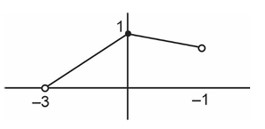How do our NCERT Solutions for Three-Dimensional Geometry help in JEE preparation?
-
1 Answer
-
All students need a very strong fundamental knowledge of concepts, formulas and problems variations, which can be only achived through the NCERT textbooks. that is why our NCERT Solutions for Class 11 Three-Dimensional Geometry are a very relaible resource to build strong basics with accuratre informations for JEE preparation. Students can access and download the PDF of 3D Geometry NCERT Solutions on our page and use it for their benefits.
Similar Questions for you
...(1)
–2α + β = 0 …(2)
Solving (1) and (2)
a = 1
b = 2
-> a + b = 3
Start with
(1)
(2)
(3) GTE : 4!, GTN: 4!, GTT : 4!
(4) GTWENTY = 1
⇒ 360 + 60 + 60 + 24 + 24 + 24 + 1 = 553
->g(x) = |x|, x Î (–3, 1)

Range of fog(x) is [0, 1]
Range of fog(x) is [0, 1]
First term = a
Common difference = d
Given: a + 5d = 2 . (1)
Product (P) = (a1a5a4) = a (a + 4d) (a + 3d)
Using (1)
P = (2 – 5d) (2 – d) (2 – 2d)
-> = (2 – 5d) (2 –d) (– 2) + (2 – 5d) (2 – 2d) (– 1) + (– 5) (2 – d) (2 – 2d)
= –2 [ (d – 2) (5d – 2) + (d – 1) (5d – 2) + (d – 1) (5d – 2) + 5 (d – 1) (d – 2)]
= –2 [15d2 – 34d + 16]
at
-> d = 1.6
16cos2θ + 25sin2θ + 40sinθ cosθ = 1
16 + 9sin2θ + 20sin 2θ = 1
+ 20sin 2θ = 1
– 9cos 2θ + 40sin 2θ = – 39
48tan2θ + 80tanθ + 30 = 0
24tan2θ + 40tanθ + 15 = 0
-> ,
So will be rejected as
Option (4) is correct.
Taking an Exam? Selecting a College?
Get authentic answers from experts, students and alumni that you won't find anywhere else
Sign Up on ShikshaOn Shiksha, get access to
- 66k Colleges
- 1.2k Exams
- 680k Reviews
- 1800k Answers
